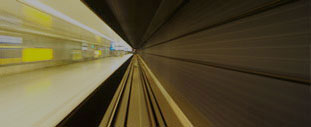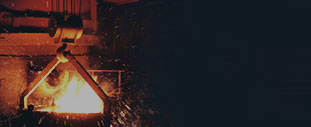

Recently it was recognized that the standard modelling techniques now in use for determining fire performance of concrete structures were unable to provide an prediction of the level of cracking that would occur within structures. A study performed by TNO (Netherlands) in 2004 looked at the issue of repairing concrete exposed to fires within tunnel environments. This study looked at the possibility of permanent damage occurring to constructions in terms of deformation and cracks which may result in leakage (immersed tunnels) thereby leading to corrosion of reinforcement. The TNO report concluded that although deformation may be negliable, and cracks tend not to form on the exposed face of the concrete structure, there was a distinct possibility that cracking could occur on the unexposed face of the structure. Due in part to thermal incompatibility across the thickness of the structures.
The Finite element simulations used at the time were inadequate in detailing this aspect of performance. The idea that cracks may develop on unexposed sections of the structure were however important because these can neither be seen nor repaired when assessing damage from within the tunnel.
In recent years, however, the focus fire safety engineering has moved in a different direction. Explosive spalling has become a major problem, with concrete mixtures becoming more and more high grade. When concrete is heated, moisture or water vapour will expand more than the surrounding concrete, and escape through the pores. However, when the permeability is small (as is typically the case in high grade concretes), the water vapour cannot escape and internal pressure will build.
This has only increased the necessity of further research into the problem of cracking on the unheated side, because unlike fire resistant boards or sprays, the application of PP fibres does not insulate the structure and reduce the heat gradient. This in turn means that the concrete can easily reach temperatures well in excess of 1000ºC. This also means that the thermal incompatibility between the exposed and unexposed face of a concrete structure, will become much larger, which could cause far larger cracks on the unheated side.
A series of fire tests were carried out on small scale immersed tunnel sections, these sections were cast in a range of concrete grades, some sections were protected with PP fibres, others were protected with fire resistant boards, others remained unprotected. All sections were exposed to a range of heating rates to determine the ability of the concrete to withstand the effects of cracking. In all the tests performed, the cracking pattern that developed was, perhaps surprisingly, more or less the same on each occasion in terms of the global pattern and the location of the most severe cracking. The development of crack width and the distance between cracks were variable. The largest cracks occurred near the junction between walls and soffit portion of the structure, perhaps not surprising as due to the thermal gradient the soffit section tends to bow towards the fire. When applying a vertical load, this curvature is increased, this deflection results in issues at the corner junctions.
To do justice to the complex issues related to this new and important research, full report details are available for download as follows:
- Investigation of concrete cracking due to fire in scaled immersed tunnel elements (Efectis report 2008-R1046)
- Investigation of concrete cracking due to fire in scaled immersed tunnel elements: analysis of test results (Efectis report 2009-R0358)
- Cracking on the unheated side during a fire in an immersed tunnel, Ben Nieman Master's Thesis TU-Delft, August 2008
This article “New Research Into The Phenomenon Of Cracking Of Concrete Under Fire” by Ian R. Holt, Regional Technical Director, Promat International Asia Pacific.
For enquiry on the contents of PTT, please click here.








